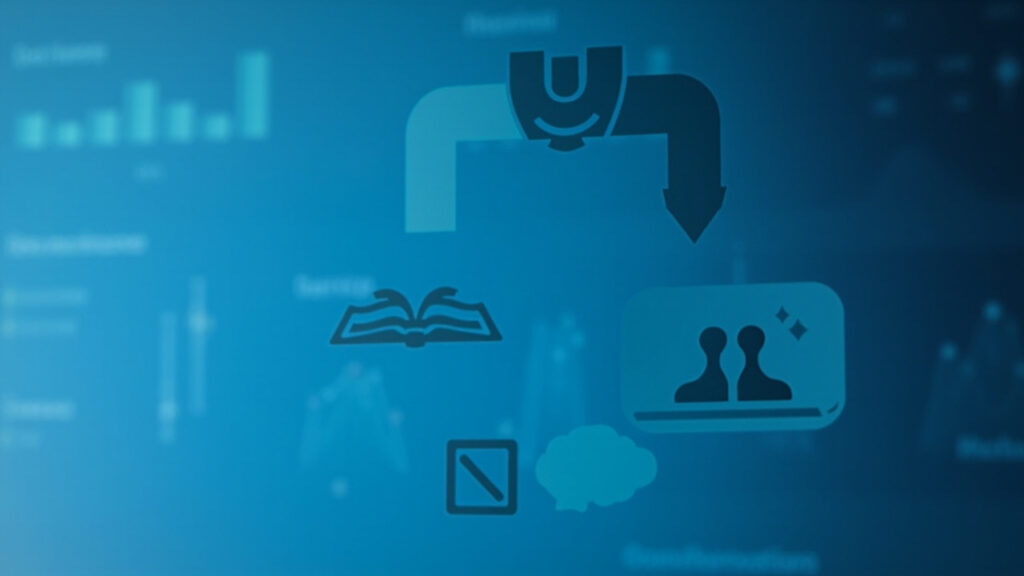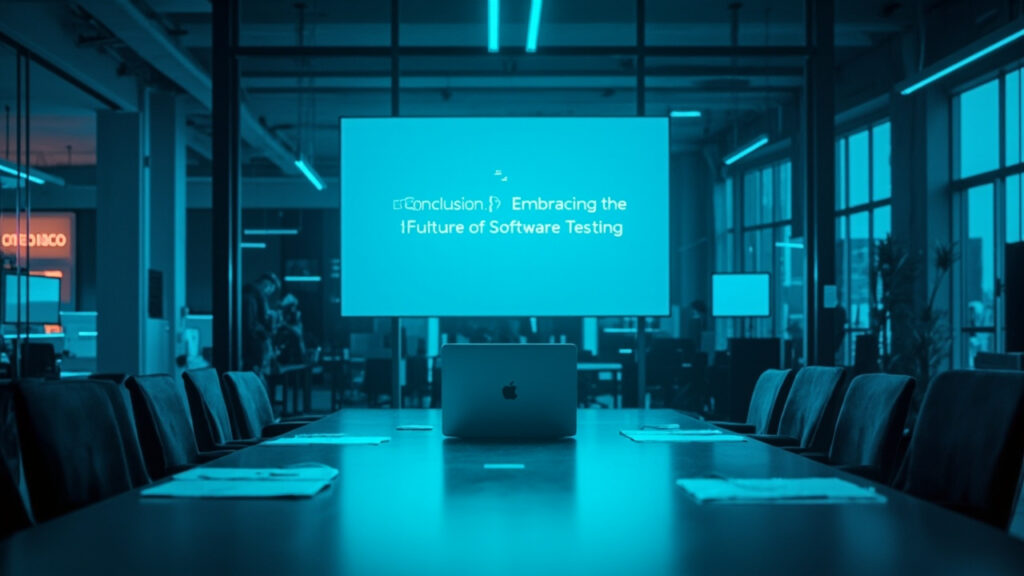In the rapidly evolving world of software development, the importance of effective software testing cannot be overstated. As businesses increasingly rely on digital solutions, the demand for flawless, robust software has never been higher. However, traditional testing methods often fall short in today’s dynamic and complex development environments. This blog post aims to explore the multifaceted world of software testing, addressing common challenges and introducing innovative solutions, including the cutting-edge AI-powered tool, GenQE, that is reshaping the landscape of software quality assurance.
Software testing is a critical phase in the software development lifecycle, yet it is often undervalued or misunderstood by stakeholders outside the QA teams. This comprehensive guide will delve into the nuances of software testing, from basic concepts to advanced strategies, providing readers with the knowledge and tools needed to enhance the quality of their software products. Whether you are a seasoned QA professional or new to the field, this post will equip you with insights into optimizing testing processes and implementing state-of-the-art technologies like GenQE to achieve superior software quality.
By the end of this article, you will have a deeper understanding of the significance of software testing, the challenges it faces in modern development cycles, and how leveraging AI-powered platforms can transform your testing strategy, ensuring that your software meets and exceeds the expectations of users in a cost-effective and efficient manner.
Understanding the Basics of Software Testing

Software testing is an integral part of the software development process, aimed at evaluating the functionality, security, and overall performance of a product to ensure it meets specified requirements. It is the last line of defense against bugs and errors that, if left unchecked, could be costly or disastrous in production environments.
What is Software Testing?
At its core, software testing involves the execution of a software component or system component to evaluate one or more properties of interest. The primary goal is to detect software failures so that defects may be discovered and corrected before the product is released to end users. This process involves various stakeholders, including developers, project managers, and end-users, to ensure a well-rounded examination of the software’s capabilities and limitations.
Types of Software Testing
- **Manual Testing:** Testers manually execute test cases without using any automation tools. This is often necessary for exploratory testing, where the tester’s insight is crucial.
- **Automated Testing:** Uses specialized tools to execute tests automatically. Automation is key for regression tests and other repetitive tasks that would be time-consuming and prone to human error if done manually.
- **Continuous Testing:** Part of the Continuous Integration/Continuous Deployment (CI/CD) pipeline, ensuring that automation tests are run automatically every time a change is made to the codebase.
Each type of testing has its place in a comprehensive software testing strategy, and choosing the right approach depends on the project requirements, timeline, and available resources.
Importance of a Structured Testing Approach
A structured approach to testing enables teams to systematically uncover different types of issues in software, ensuring that the product functions as expected under various scenarios. It also helps in maintaining the quality of the product throughout its lifecycle, supporting updates and enhancements.
Challenges in Modern Software Testing

As software systems become more complex and integrated, traditional testing methods are increasingly unable to meet the demands of modern software development practices. This section discusses the primary challenges faced by testing teams today.
Keeping Up with Rapid Development Cycles
In the era of agile development and frequent releases, testing teams are often under immense pressure to complete testing cycles quickly. This can lead to rushed tests or insufficient coverage, potentially letting defects slip through.
Ensuring Comprehensive Test Coverage
With the increasing complexity of software applications, ensuring thorough test coverage becomes a daunting task. Each integration and addition can introduce new paths and potential failure points.
Adapting to New Technologies and Platforms
As new technologies and platforms emerge, testers must quickly adapt their skills and strategies. This includes testing on various devices, operating systems, and in different environments like cloud platforms.
Resource Constraints and Cost Management
Testing can be resource-intensive, requiring significant investments in manpower and tools. Organizations must balance the need for thorough testing with budget constraints, making it essential to optimize testing strategies for cost-efficiency.
Leveraging Technology: The Role of AI in Enhancing Software Testing

Artificial Intelligence (AI) is revolutionizing many industries, and software testing is no exception. AI can automate complex tasks, predict outcomes based on data patterns, and adapt to changes in real-time, offering significant improvements over traditional methods.
AI-Driven Test Case Generation
One of the most time-consuming aspects of software testing is creating comprehensive test cases. AI can automate this process by analyzing application data and user interactions to generate relevant test scenarios. This not only saves time but also enhances the coverage and effectiveness of tests.
Intelligent Test Execution
AI algorithms can prioritize test cases based on risk and potential impact, focusing efforts where they are most needed. This smart execution helps in identifying critical issues earlier in the cycle, thereby reducing the risk of major defects making it to production.
Self-Healing Test Scripts
AI can also address the issue of maintaining test scripts when applications change. AI-powered tools can automatically update scripts to reflect changes in the UI or APIs, significantly reducing maintenance overhead.
GenQE: A Game-Changer in AI-Powered Software Testing

Incorporating AI into software testing processes offers numerous benefits, and platforms like GenQE are at the forefront of this transformation. GenQE utilizes advanced AI techniques to enhance test automation, boost efficiency, and ensure high-quality software delivery.
Key Features of GenQE
- **AI-Driven Test Generation:** GenQE automates the creation of test cases by analyzing software requirements and historical data, reducing the dependency on manual test case design.
- **Smart Test Execution:** Prioritizes and executes test cases based on risk analysis, optimizing testing efforts.
- **Self-Healing Automation:** Automatically adjusts test scripts to accommodate changes in the application, minimizing maintenance efforts.
By integrating GenQE into their testing strategies, organizations can achieve faster time to market, higher accuracy, and reduced testing costs, all while maintaining or improving software quality.
Best Practices for Effective Software Testing

Adopting best practices in software testing not only helps in detecting defects early but also enhances the efficiency and effectiveness of the testing process. Here are some strategies that can be integrated into any testing regime.
Comprehensive Planning and Analysis
Before testing begins, it is crucial to understand the application thoroughly. This includes reviewing documentation, understanding user workflows, and identifying critical areas for testing focus.
Continuous Learning and Adaptation
The world of technology is constantly evolving, and so should testing strategies. Teams should stay updated with the latest testing methodologies and tools, and be willing to adapt their practices to incorporate new ideas and technologies.
Collaboration and Communication
Effective communication between developers, testers, and other stakeholders is essential for successful testing. Regular meetings, clear reports, and shared tools can help bridge gaps and ensure that everyone is aligned on the goals and outcomes of the testing process.
Conclusion: Embracing the Future of Software Testing

As we have explored, software testing is a critical, complex, and evolving discipline that plays a crucial role in the success of software projects. By understanding its fundamentals, acknowledging the challenges, and adopting advanced tools like GenQE, organizations can enhance their testing strategies and produce software products that are not only functional but also robust and user-friendly.
In today’s competitive market, where the cost of failure is high, investing in quality software testing is not just a necessity but a strategic advantage. By leveraging AI and embracing innovative platforms, teams can transform their testing processes, reduce costs, and accelerate time to market, all while ensuring the highest standards of quality.
For those looking to further explore AI-powered testing solutions or improve their testing processes, delving into tools like GenQE could provide the edge needed in the highly competitive field of software development. Embrace the future of software testing, and see how your projects can benefit from the intelligence and efficiency that AI brings to the table.
Discover More Innovative Solutions
Want to learn more about the tools and technologies discussed in this article? Explore how these innovations can be tailored to your specific needs and workflow requirements.
Our team of experts is available to answer your questions and provide personalized insights into how modern solutions like GenQE can address your specific challenges.